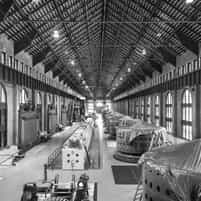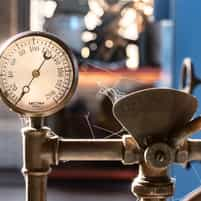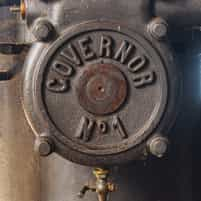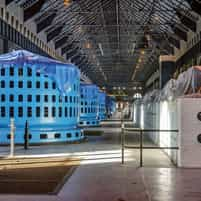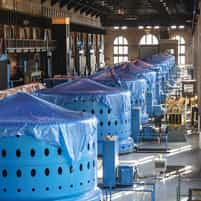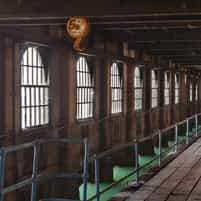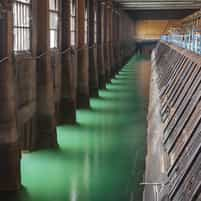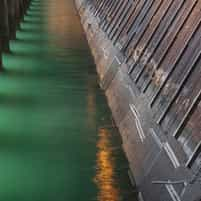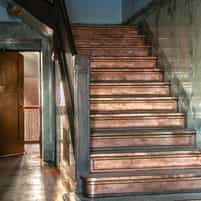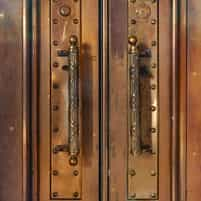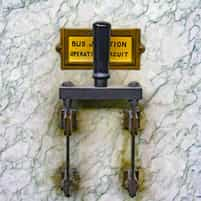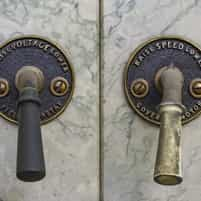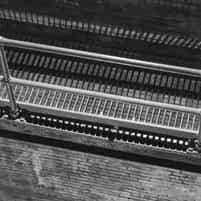Rankine Generating Station
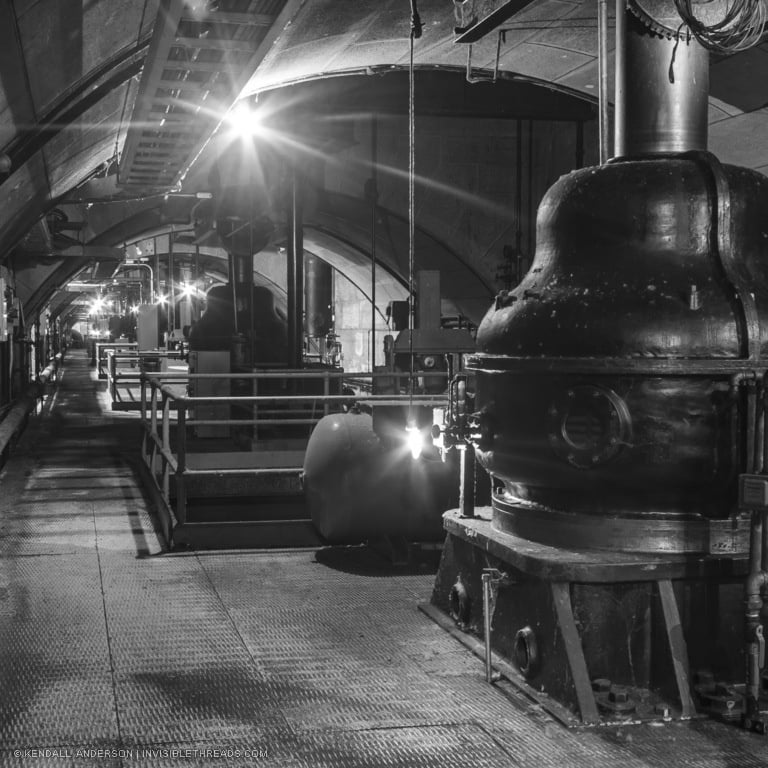
- Year Built: 1905
- Year Closed: 2005
For a station that's been producing power for 100 years, it's in remarkably good shape.
The William Birch Rankine station (originally known as the Canadian Niagara Power station) has a rich history and was a key player in the development of hydro-electric power in Niagara Falls and the surrounding area.
When it began generating power in 1905, it was the most advanced hydro-electric station in the world with the largest capacity generators (10,000 horsepower). Today, it's considered small.
Generator Hall
-
 View photo with title: The Grand Turbine Hall
View photo with title: The Grand Turbine Hall
-
 View photo with title: Polished Flyball Governor
View photo with title: Polished Flyball Governor
-
 View photo with title: Flyball Governor Gauge Detail
View photo with title: Flyball Governor Gauge Detail
-
 View photo with title: Flyball Governor No. 1
View photo with title: Flyball Governor No. 1
-
 View photo with title: Blue Generator Heads
View photo with title: Blue Generator Heads
-
 View photo with title: Tarped Generators
View photo with title: Tarped Generators
-
 View photo with title: Steel Roof Truss Array
View photo with title: Steel Roof Truss Array
For its 100 year anniversary, Professor Norman Ball wrote The Canadian Niagara Power Company Story. This book describes in detail the origins of the station, the people involved in its history, how electric power changed the area, and how the station adapted to all of the changes that occurred during its operational life.
The book dives into the technical challenges in designing, building and maintaining the station, and is supported by historical photos and anecdotes from former workers. This includes both power generation and transmission, along with the different people and technical experts involved in each.
While the architectural style is different, the station has functional similarities to the Toronto Power Company station located a few hundred meters away.
Water enters through the forebay and drops down 130 feet through the penstocks. This falling water drives turbine blades which spin a rotor that connects back to the generator in the power house at ground level.
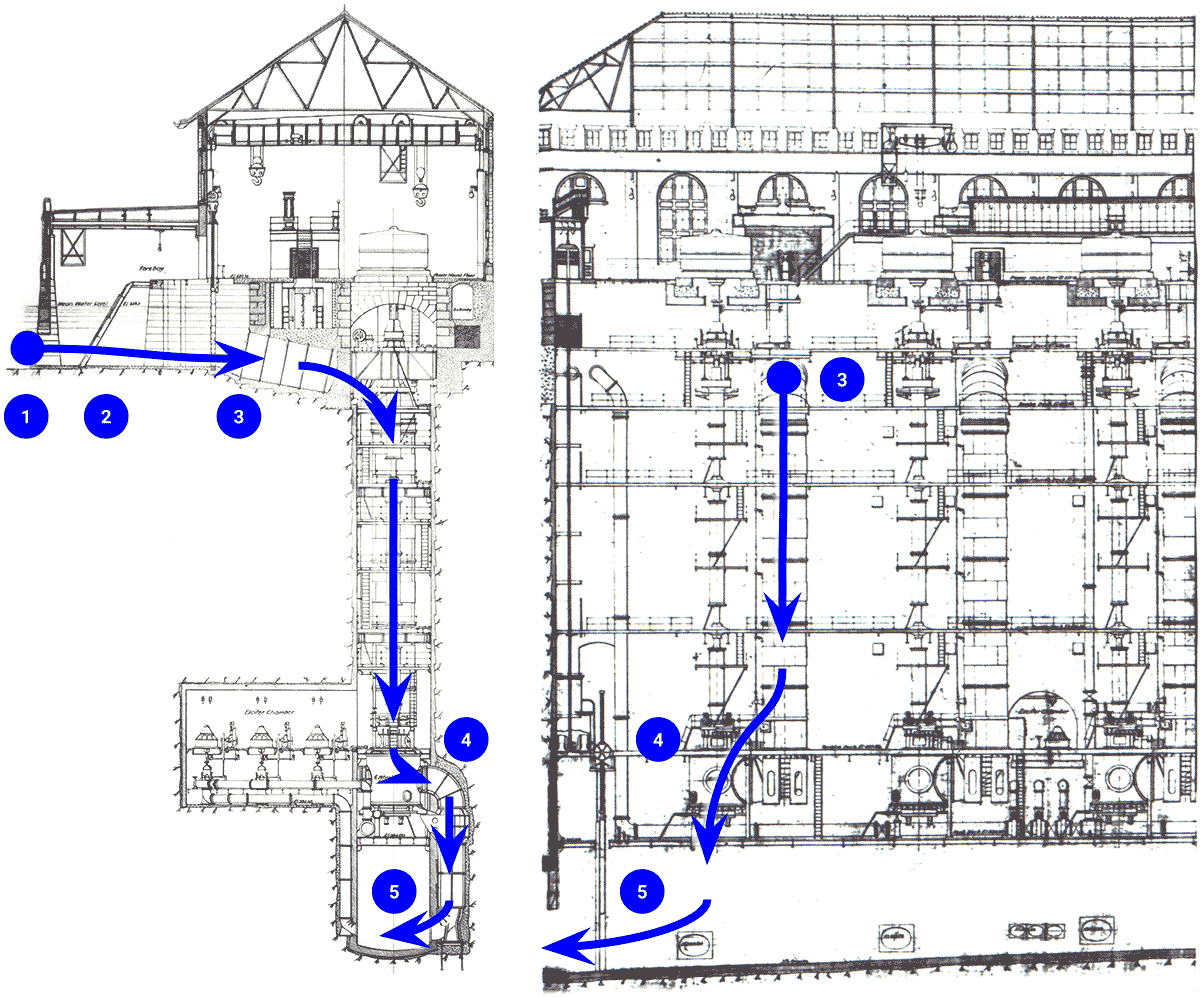
Admin / Control Room
-
 View photo with title: Supervisor's Office Door
View photo with title: Supervisor's Office Door
-
 View photo with title: Copper Stairs
View photo with title: Copper Stairs
-
 View photo with title: Polished Brass Door Handles
View photo with title: Polished Brass Door Handles
-
 View photo with title: Marble Control Panel Lever Switch
View photo with title: Marble Control Panel Lever Switch
-
 View photo with title: Thomson Ammeter Collection
View photo with title: Thomson Ammeter Collection
-
 View photo with title: Raise or Lower Speed and Voltage
View photo with title: Raise or Lower Speed and Voltage
-
 View photo with title: Control Room Handles on Marble
View photo with title: Control Room Handles on Marble
The Power House—the most visible part of the station to the public—is 600 feet long and contains 11 generators. It looks like an industrial building, not too dissimilar from other factory-like settings.
However, the control room is unlike anything that one would expect today. Levers and knobs are mounted on clean marble surfaces, hinting at the fact that the station was built to be exhibited. It was a demonstration of modern technology and it attracted numerous visitors.
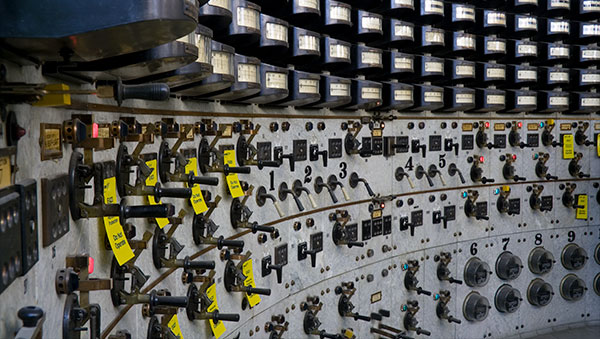
In 2006 the station was decommissioned and ownership was passed to the Niagara Parks Commission a few years later. The station is planned to reopen as a historic site for tourism sometime in 2021.
Unfortunately I didn't have a chance to venture down to the wheelpit or turbines below ground, or to see the tailrace. One hopes that this will become publicly accessible at some point in time. For now, I'm stuck looking at photos from archives or other explorers who managed to visit.
Related Galleries
-
 View gallery with title: Richard L. Hearn Generating Station - Interior photos of a huge coal-fired electrical generating station in Toronto, Canada. This is industry on a huge scale, with a turbine hall, control rooms and vast, complex spaces.
View gallery with title: Richard L. Hearn Generating Station - Interior photos of a huge coal-fired electrical generating station in Toronto, Canada. This is industry on a huge scale, with a turbine hall, control rooms and vast, complex spaces.
-
 View gallery with title: Toronto Power Generating Station - Interior photos of a hydro-electric power generating station from 1906 beside Niagara Falls. Bright, large spaces with turbines and other old equipment.
View gallery with title: Toronto Power Generating Station - Interior photos of a hydro-electric power generating station from 1906 beside Niagara Falls. Bright, large spaces with turbines and other old equipment.
-
 View gallery with title: Lakeview Generating Station - Coal-fired generating station built in 1961 and closed in 2005. Interior and exterior photos, including the generators and turbine blades.
View gallery with title: Lakeview Generating Station - Coal-fired generating station built in 1961 and closed in 2005. Interior and exterior photos, including the generators and turbine blades.
